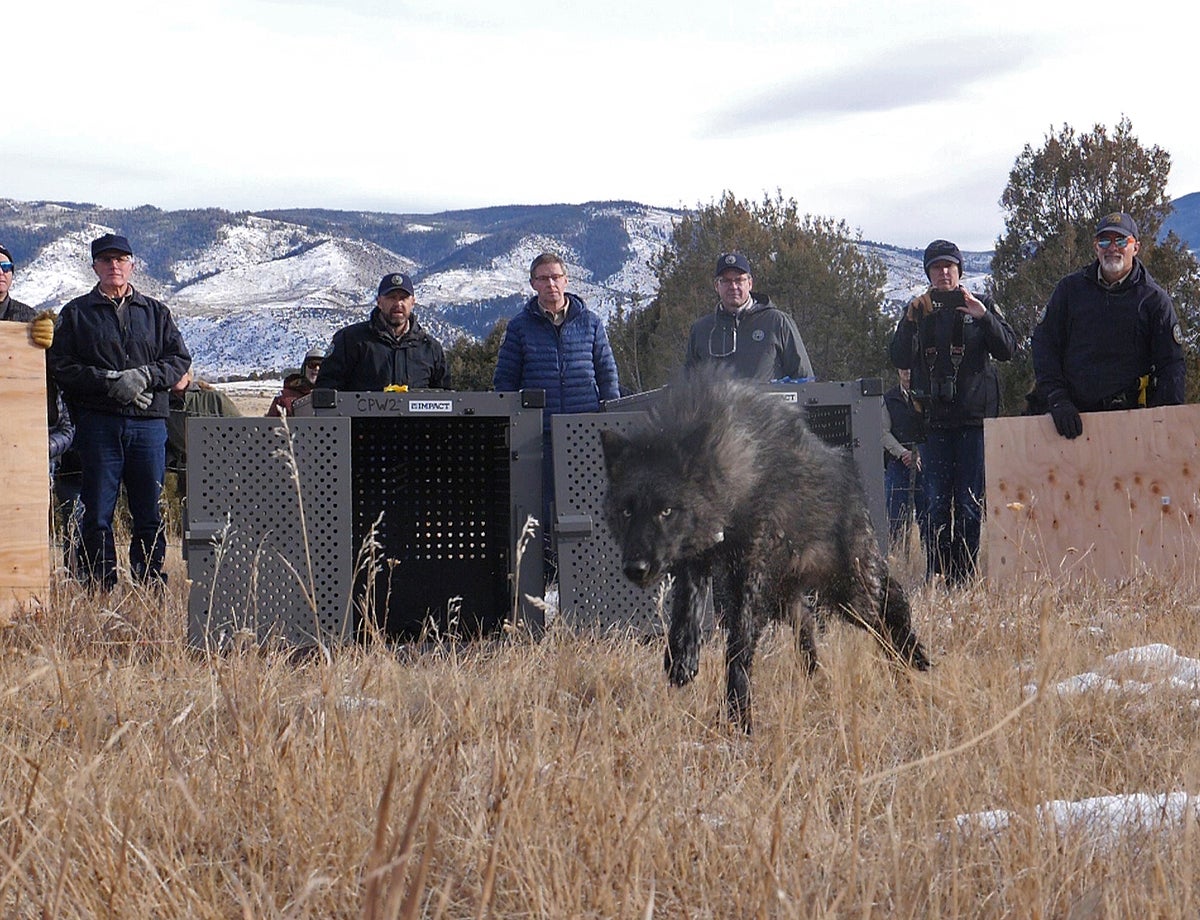Wolf pack that attacked Colorado livestock to be relocated as reintroduction program stumbles
Wildlife agencies are trying to capture and relocate the first pack of wolves that formed under Colorado’s ambitious wolf reintroduction program

Wildlife agencies are trying to capture and relocate the first pack of wolves that formed under Colorado's ambitious wolf reintroduction program after the animals repeatedly attacked livestock, marking an early stumble in the voter-driven initiative.
The move comes only a week after state officials touted three pups born to the Copper Creek pack, which formed after 10 of the predators were released in December over bitter opposition from livestock groups. The pack has at least two adults.
The bid to capture them goes against Colorado's wolf management plan that was adopted last year. It included guidance that relocation “has little technical merit” because it could create problems elsewhere if the animals continue attacking livestock. The plan calls for using non-lethal approaches, such as patrolling ranches with range riders and scaring away problem wolves, or killing them if necessary to stop ongoing attacks on livestock.
Officials did not say where the Copper Creek pack would be relocated, nor whether they would be released into the wild or kept in captivity.
Ranching groups had wanted the wolf pack killed. Wildlife advocates said more should have been done to keep them from killing livestock, such as using electric fencing that can better deters attacks.
In other parts of the U.S. where wolves are well-established — including in the Northern U.S. Rocky Mountains and around the Great Lakes — the predators are routinely killed by wildlife officials in response to livestock attacks. Wolves are prolific breeders so removing some animals doesn't have population-wide effects.
Colorado's attempt to instead capture problem wolves comes after an agency spokesperson told The Associated Press last week that officials wanted to avoid killing them because “it's too early in the process” of reintroduction.
“We don't have enough wolves on the landscape to lethally remove” the pack, spokesperson Travis Duncan said.
State officials did not disclose where the capture operations were taking place but said the work was being done in conjunction with the U.S. Fish and Wildlife Service.
Michael Saul with Defenders of Wildlife said it was a “big setback” for the reintroduction.
“There are lots of ranchers using existing tools who are living with wolves and not having this problem,” Saul said.
Rancher Ted Ritschard, who lives about 15 miles (24 kilometers) from the ranch in Grand County, Colorado, where most of the livestock attacks took place, said he was glad the pack would be removed. He blamed them for killing at least 16 cattle and sheep and wants them in captivity so they don't kill again.
“These pups have learned to kill livestock so they're going to keep doing it,” said Ritschard, president of the Middle Park Stockgrowers Association. “Once they get a taste of sheep or cattle, that’s a whole different world."
Ritschard said his group had sought permission earlier this year to kill the wolves that were causing problems but was denied. The state's denial notice said livestock attacks decreased when a rancher in the area buried a “dead pit” used to dispose of dead animals that was suspected of attracting wolves.
Ritschard refuted the claim that the dead pit played a role in the attacks.
“We would see the wolves go by that dead pit at night. There was nothing fresh in that dead pit,” he said.
In a statement issued late Tuesday, Colorado Parks and Wildlife Director Jeff Davis characterized the Copper Creek pack relocation as a “unique case,” but did not elaborate.
“This action is by no means a precedent for how CPW will resolve wolf-livestock conflict moving forward,” Davis said in the statement. He said the goal was to relocate the pack “while we assess our best options for them.”
Wolf reintroduction in Colorado was narrowly approved by voters in a 2020 ballot measure. Wildlife officials expect to release an additional 30 to 50 wolves over the coming years. A handful of wolves have also wandered into Colorado from Wyoming.
Proponents argued that the apex predators would reestablish an ecological balance in the area. Wolves were largely hunted out of the state by the 1940s.
Owners of calves that are killed can be compensated by the state for the animal’s market value, up to $15,000. Ranchers have said that's not enough.
Gray wolves killed some 800 domesticated animals across 10 states in 2022, including Colorado, according to a previous Associated Press review of depredation data from state and federal agencies.
While the losses can affect individual ranchers, it has a negligible effect on the industry at large. Ranchers say many additional kills go unrecorded because the dead livestock is never found or the cause of death can’t be confirmed.
Bookmark popover
Removed from bookmarks